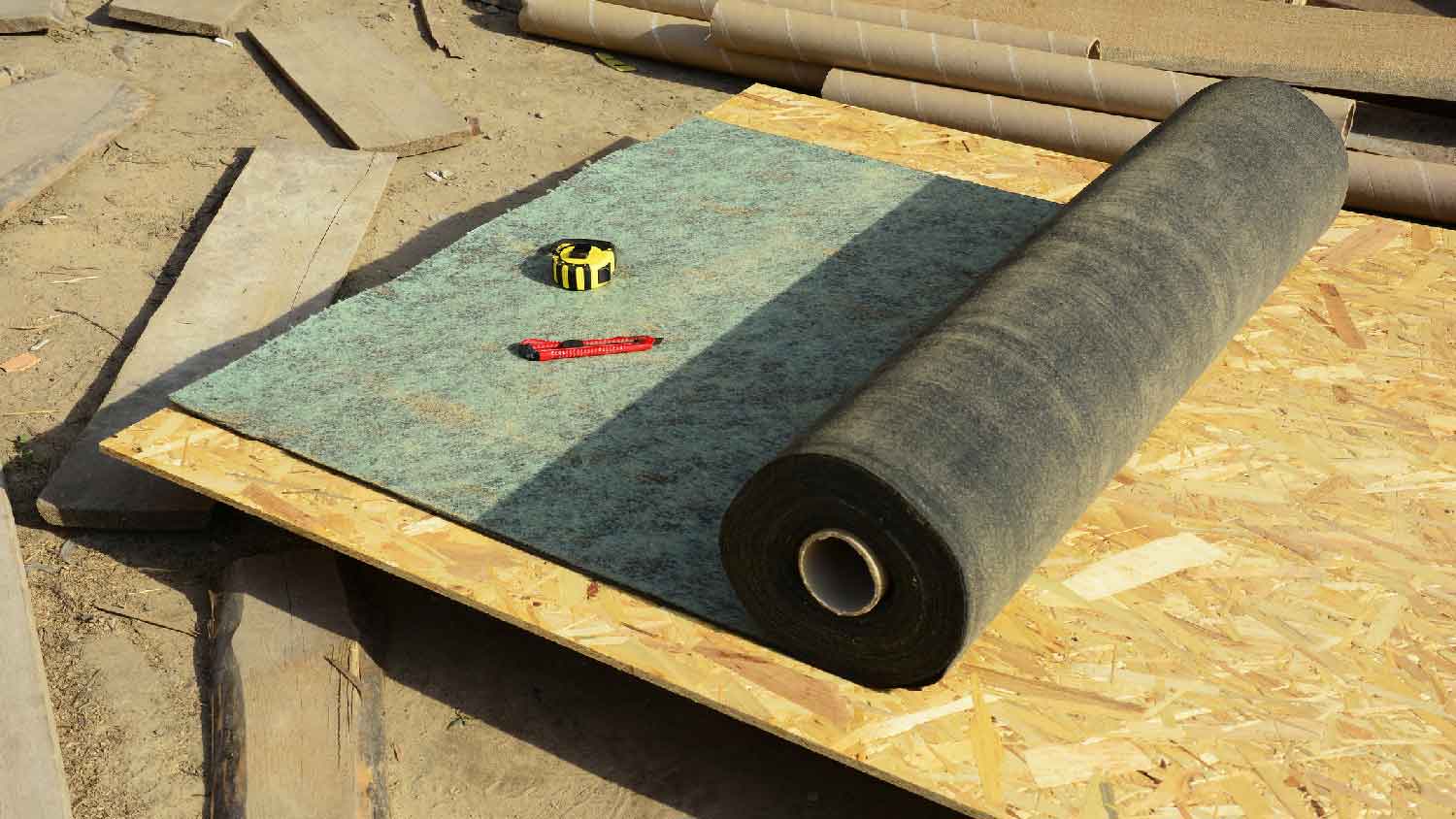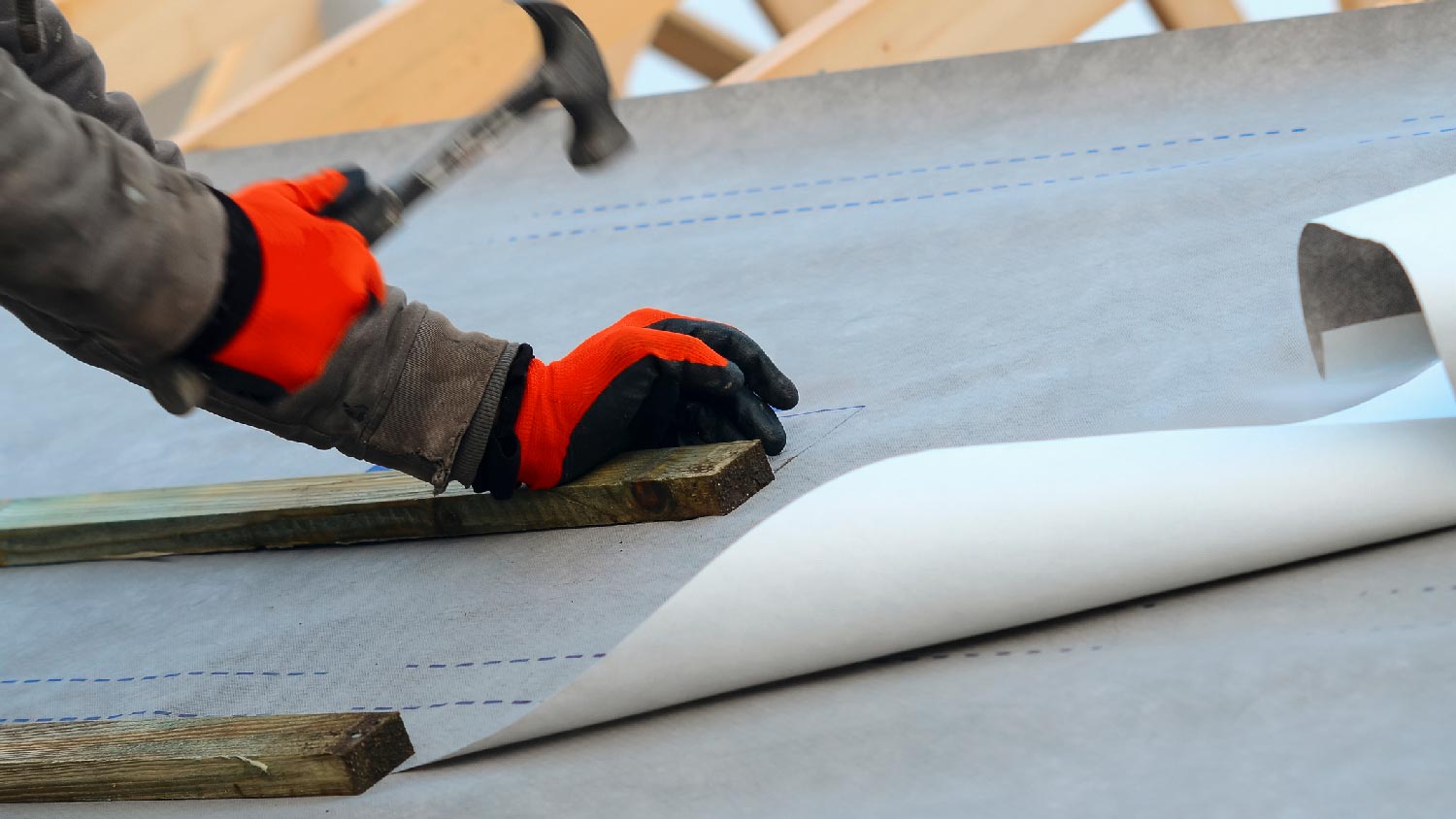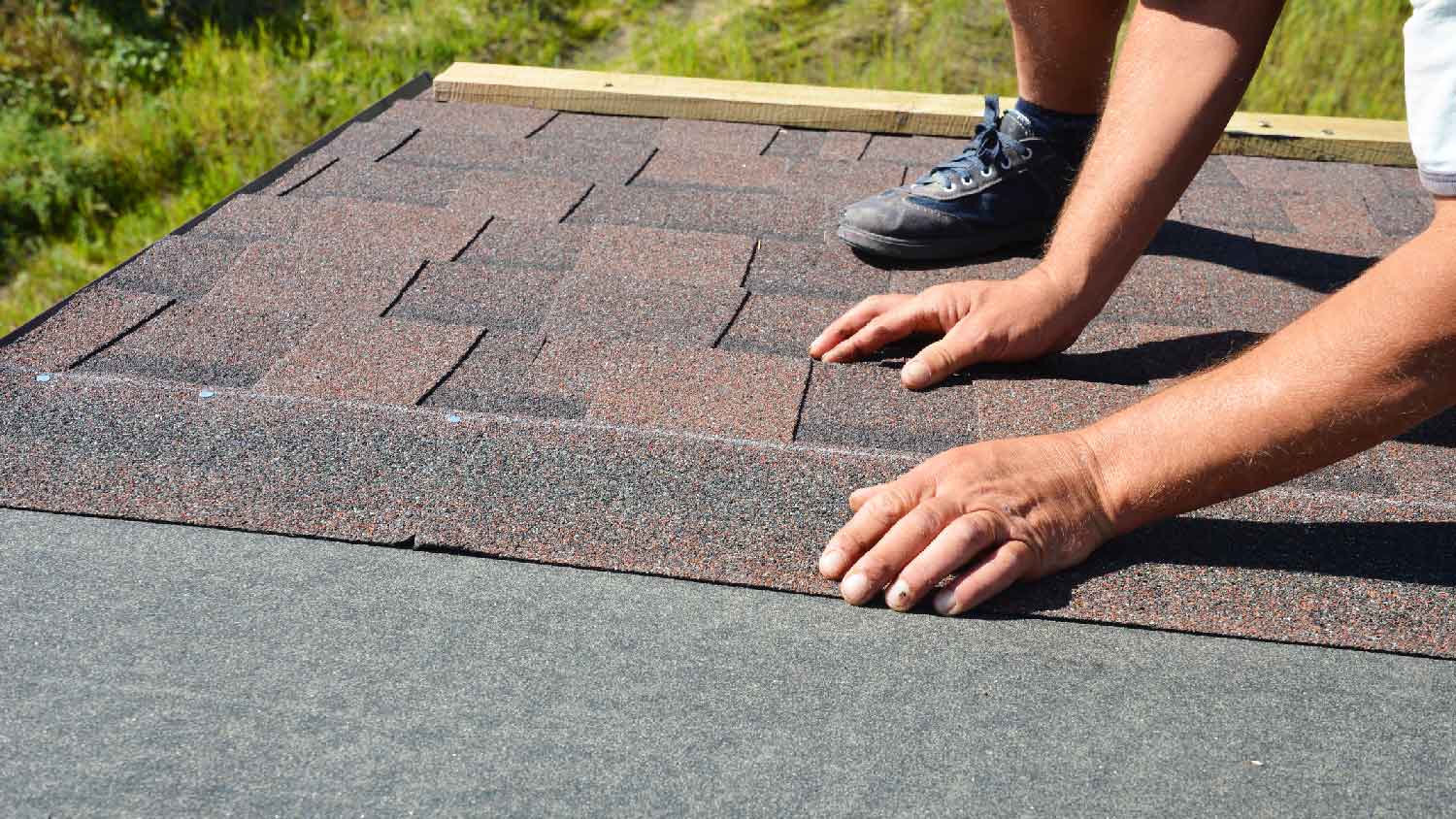Felt vs. Synthetic Underlayment: Key Differences
Understand the differences between these two underlayment types


Roof underlayment is a water-resistant roofing layer that protects your home from water damage.
Felt underlayment has been used for decades and is a budget-friendly option.
Synthetic underlayment offers superior water resistance but at a higher price.
Protecting your home from water and other weather-related damage is your roof’s most important job, but do you know which parts of your roof keep your home safe and dry? The roof underlayment sits between the shingles and roof sheathing, adding a layer of protection against moisture. Learn the difference between the two most common underlayment materials—felt and synthetic—and how to decide which is right for your roof.
Felt vs. Synthetic Underlayment: Key Differences

Both felt and synthetic underlayment serve the same purpose—to protect your roof sheathing and everything underneath it from water damage. The main difference between these two types of underlayment is the material they’re made of.
Felt underlayment is made from paper or felt that’s been saturated with asphalt, while synthetic underlayment is made from woven synthetic polymers. Synthetic underlayment is often lighter weight and more water-resistant than felt but felt is easier to install and less likely to result in mold or fungus growth.
What Is Felt Underlayment?

Felt underlayment was the most common type of underlayment and was long considered the best underlayment for asphalt shingle roofs until the development of synthetic underlayment. Felt underlayment comes in several different weights and meets most building codes and requirements. It starts with organic material—paper, felt, or fiberglass—which is then saturated in asphalt to strengthen the material and make it water-resistant.
| Pros | Cons |
|---|---|
| Budget-friendly | Less water-resistant |
| Easy to install | Heavier material |
| Breathable | Prone to ripping and tearing |
Best for: Budget-conscious homeowners and homes in areas without severe weather
Pros of Felt Underlayment
The biggest advantage of felt underlayment is its cost. It’s the most affordable type of underlayment and offers up to 30 years of protection if properly installed. Proper installation is fairly easy with felt underlayment—it doesn’t require specialized tools or techniques, and roofers have been installing it for decades.
Felt underlayment is also more breathable than synthetic, which may not seem like a plus when it comes to a material meant to keep your home dry, but surprisingly, it is. Its permeability prevents moisture from getting trapped in between the underlayment and the roof sheathing—moisture that can kick-start mold and fungus growth.
Cons of Felt Underlayment
Felt underlayment is less water-resistant than synthetic, so it doesn’t hold up as well to heavy rain. The heavier material puts more strain on the roof sheathing and can cause warping, bowing, or splitting. Felt underlayment is also prone to ripping and tearing, both during installation and from exposure to the elements over time. There’s also a limit to how long this underlayment can be left exposed, so installation and replacement should be done quickly to avoid damage.
What Is Synthetic Underlayment?

Synthetic underlayment is made from polymers like polypropylene or polyethylene, woven into a lightweight layer. It’s more moisture-resistant than felt and can be left exposed for longer periods, making it a popular choice for convenience during installation. Synthetic underlayment can be used with most roofing materials, and it’s often considered the best underlayment for metal roofs.
| Pros | Cons |
|---|---|
| Lightweight | More expensive |
| Durable | May encourage mold growth |
| More water-resistant | Easier to puncture |
Best for: Homes in areas with extreme weather and homes with metal roofs
Pros of Synthetic Underlayment
Because synthetic underlayment is lighter weight than felt, it puts less stress on the roof sheathing and is easier to carry for installation or replacement. Synthetic underlayment is extremely durable and can last for 25 to 50 years when installed correctly. It’s also more water-resistant and less prone to rips and tears than felt, which helps it stand up to extreme weather longer.
Cons of Synthetic Underlayment
While this material is a popular choice, there are a few problems with synthetic underlayment. It’s less permeable than felt, so it’s more likely to encourage mold or fungus growth. It’s also easier to puncture and harder to replace than felt. Synthetic underlayment is also a more expensive option, so it may not be suitable for homeowners on a budget.
Felt vs. Synthetic Underlayment

Choosing an underlayment material depends on your budget and roofing needs. A local roofer can help you decide on the best underlayment for your house and install it properly so you get the longest and best protection possible.
Cost: Felt Underlayment
The cost to replace roof underlayment or install new underlayment is significantly higher for synthetic than felt. Asphalt-saturated felt costs an average of $0.05 to $0.45 per square foot, while synthetic costs $0.15 to $0.70 per square foot.
Ease of Installation: Tie
While felt underlayment doesn’t require specialized tools or techniques, it’s heavier and more difficult to walk on than synthetic. Installing synthetic underlayment is more complicated, but the material is lighter weight, easier to carry, and can be left exposed for longer. When installing underlayment, be sure to choose a roofer with plenty of experience installing the material you pick.
Water Resistance: Synthetic Underlayment
Synthetic underlayment offers superior water resistance compared to felt. Felt underlayment is more permeable, allowing water to pass through once the material is saturated. Synthetic underlayment allows less water intrusion and better protects your roof sheathing from moisture.
Ease of Repair: Felt Underlayment
Synthetic underlayment is more difficult to damage than felt but harder to repair. Repairing felt underlayment often requires less precision and less time than repairing synthetic, although it may need to be repaired more often.
Life Span: Synthetic Underlayment
Felt underlayment can last up to 30 years under ideal conditions, but it’s more prone to damage than synthetic, which has an expected life span of up to 50 years. Synthetic underlayment is less likely to tear, become waterlogged, or deteriorate, so you can expect it to last longer than its felt counterpart.





- Roofers
- Metal Roofing
- Roof Repair
- Roof Inspection
- Vinyl Siding Repair Contractors
- Flat Roofing Companies
- Commercial Roofing
- Emergency Roofing Companies
- Leaky Roof Repair
- Metal Roof Repair
- Business Roof Repair
- Flat Roof Repair
- Tile Roof Repair
- Slate Roofers
- Rubber Roofers
- Roofing & Siding
- Metal Roof Installation
- Affordable Roofing
- Roof Sealing
- Attic Ventilation Contractors
- 3 Roof Underlayment Types to Consider
- The 3 Best Underlayments for Metal Roofs
- 7 Common Problems With Synthetic Roof Underlayment
- How to Install Sheet Vinyl Flooring Like a Pro
- Roofing Terms and Definitions Every Homeowner Needs to Know
- Estimate Your Flooring Cost With These Factors
- How to Build a Roof For Your Home, From Start to Finish
- Organic or Synthetic Fertilizer: Which One’s Better?
- 13 Types of Roofing Materials and How to Choose the Right One
- 30 Common Roofing Mistakes You Need to Know










